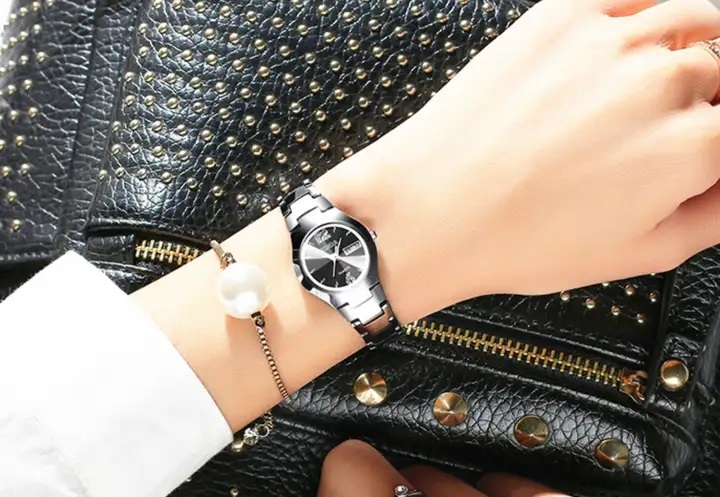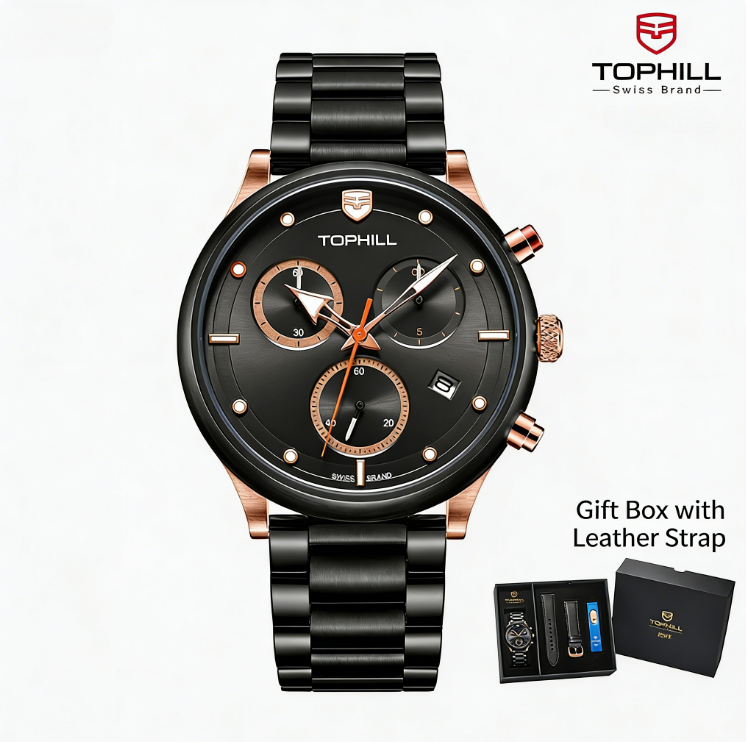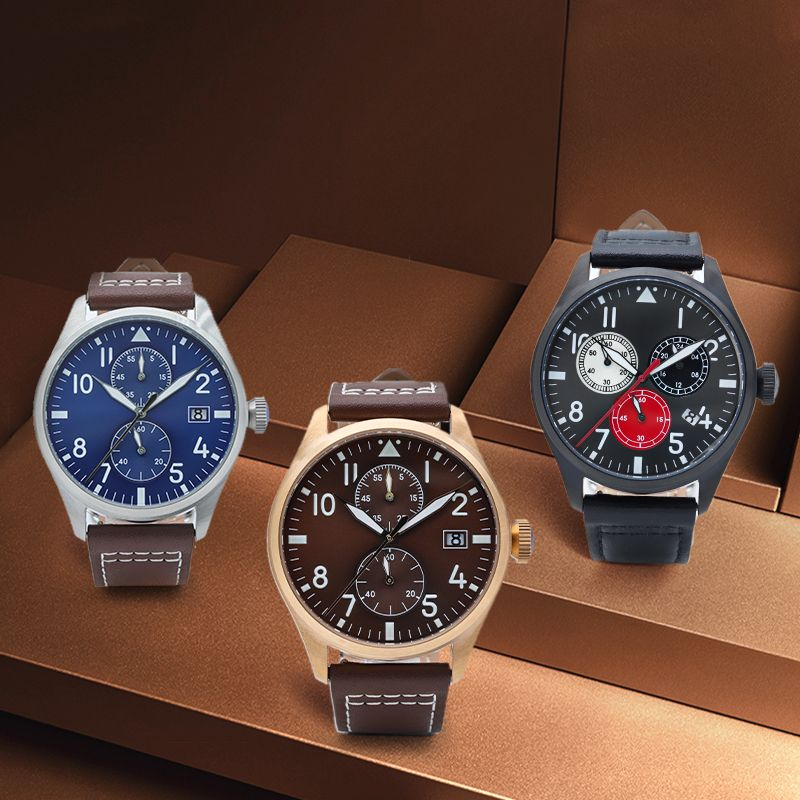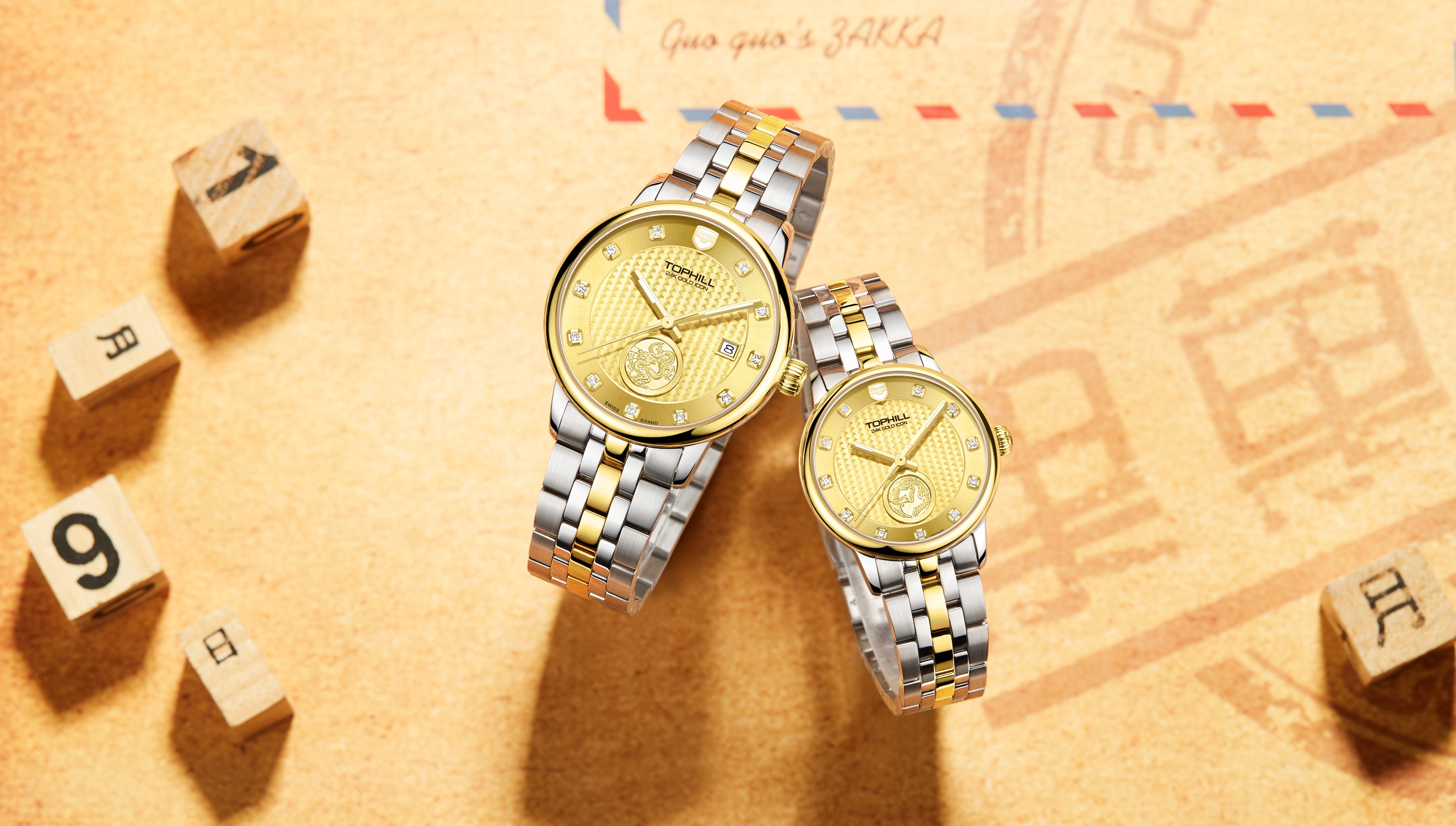Here we will introduce some basic knowledge about traditional watches.

Watch styles and functions. Watches are divided into two categories: mechanical and quartz. The most common mechanical watch has an automatic calendar function.
Which is better, a quartz watch or a mechanical watch? They both have their pros and cons, regardless of value. Quartz watches can be expensive, while mechanical watches can be cheap. Generally speaking, mechanical watches are more ornamental, while quartz watches are more accurate and easy to use. There are three ways to distinguish them.
(1) Look at the logo. Automatic watches will have the letters AUTOMATIC or SELF-WINDING.
(2) Look at the movement of the second hand. A quartz watch jumps one second at a time, while a mechanical watch has the second hand continuously moving across the dial.
(3) Check whether it can be wound or whether there is a sound of the automatic rotor spinning.
The hands and dial are used to indicate the time, and there are also windows with numbers. The window type is mostly used for calendars. The so-called "big calendar" has two windows, which display the tens and the digits of the date respectively.
They do not rotate in a clockwise circle. The flyback is the characteristic of the chronograph returning to zero, while the retrograde is when the hands move in a "fan shape". The retrograde movement in a fan shape is rather strange, as it automatically returns to zero after completing the full range.
Commonly known as "three needles and three eyes", it also has three crowns. 1. Most of the chronograph stopwatches currently use a double-button type, with the two buttons usually at 2 and 4 o'clock. The 2 o'clock button controls the "start and stop" function, and the 4 o'clock button controls the "reset" function. 2. The operation method used is usually the process of "start---stop----reset" or "start---stop----start---stop---reset". The stopwatch function must be stopped before pressing the reset button. 3. The single-button stopwatch is relatively simple, with one button controlling the "start---stop----reset" function. Please note that after each button is pressed, it must be reset before it can be pressed a second time.
The moon phase is actually a lunar calendar, indicating the cycle of the moon's waxing and waning. The sun, moon and stars are the most intuitive celestial bodies, but the moon phase is related to latitude. Design principle: The moon phase function is often placed in a semicircular window of a special shape, which includes a semicircular arc and two small arcs. This carefully designed shape combined with the moon on the moon phase disk can accurately tell us the shape of the moon at the beginning or end of a cycle. Operation principle: The moon phase displays the state of the moon on the moon phase disk based on a 29.5-day cycle. There are two moons on this moon phase disk, with 59 teeth on the edge. After being pushed by the transmission wheel, the moon phase wheel advances one tooth every day, and the changes in the moon phase can be displayed on the dial in time. The 59-tooth moon phase wheel comes from the average value of the moon phase waxing and waning every 29.5 days. Since the precise rotation period of the moon is 28 days, 12 hours, 44 minutes and 2.9 seconds, the error of the moon phase display will reach 24 hours every approximately 33 months. There is usually a moon phase adjustment button on the watch case, and the moon phase display is relatively independent of functions such as chronograph and perpetual calendar.
Shows the tightness of the watch's spring, similar to a car's fuel gauge. Long-power watches are generally more than 72 hours, usually 7-10 days, and up to one month. Long-power watches have many spring boxes or very long springs. This function is quite useful.
Perpetual calendar is one of the three most complex technologies in watches. It was already a mature design in the long-ago pocket watch era. The basic principle of realizing the perpetual calendar is to design a 48-month gear (also called a 48-tooth program gear) based on the 4-year and 48-month cycle of the leap year. Through the meshing cooperation between the gears, the jump between the big and small months and the leap year and the leap year can be realized.
Commonly known as "ghost pushing the mill", the tourbillon watch represents the highest level of mechanical watch manufacturing technology. The entire escapement and speed regulating mechanism is combined together and can rotate, and rotates continuously at a certain speed, so that it can minimize the impact of gravity on the "escapement system" in the mechanical watch and improve the timekeeping accuracy. Due to its unique operating mode, it has brought the dynamic artistic beauty of clocks to the pinnacle and has always been hailed as the "king of watches".
Jaeger-LeCoultre's top spherical three-dimensional tourbillon, the spherical tourbillon wraps the watch's escapement and speed regulation mechanism in two frames, and the two frames run along different axes. The precise rotating mechanism is like a celestial sphere that measures celestial bodies. It can be said to be the most ornamental tourbillon!
High-end watches usually use blue steel hands. There are many shapes of watch hands, but they have names and traditions, such as the famous "Breguet" hands. Sports watch hands are generally stick-shaped, while flight or military watches are mostly sword-shaped. Louis 15 and Louis 16 watch hands are basically used for clocks or pocket watches.
Waterproof function, a qualified watch must be sealed and can withstand 3 atmospheres of pressure. The letter mark of a waterproof watch: WATERRESISTANT on the back cover of the watch, usually there is also a waterproof level, and those below 10 atmospheres of pressure are considered daily waterproof. There are several ways to mark
(1) water depth, such as 30M;
(2) pressure: written as 3ATM or 3BAR. Deep diving pressure-resistant watches can be seen to have a waterproof value of 600 meters. Many watches have blindly marked waterproof values and cannot be trusted.
As the name suggests, a diving watch refers to a diving watch (a watch that has been treated with waterproof and moisture-proof treatment and is used by divers. Ordinary waterproof watches cannot be used for diving. Diving watches must meet strict regulations, and not all waterproof watches can be called diving watches. Simply put: a diving watch must have higher waterproof performance and luminous hands and scales that are easy to read the time on the seabed in the dark. The functions of a diving watch are: 1. Anti-corrosion flexible strap. 2. Screw-in non-slip crown. 3. Helium exhaust. 4. Luminous indicator. 5. Rotating bezel.
Highly anti-magnetic watches are very useful. Watches are easily affected by magnetism, causing them to suddenly run faster, several minutes a day. Full demagnetization is done professionally. The English symbol for anti-magnetic is: ANTI-MAGNETIC. Green glass Rolex, also called "flash needle", is anti-magnetic to 1000 gauss. Highly anti-magnetic watches use a soft screen cover to wrap the movement. The latest technology is anti-magnetic technology, such as Omega's 15000+gauss
The cases of deep-diving watches are very thick, mostly made of titanium, and the glass is also very thick. The record-breaking watch was created by Rolex, which dived more than 10,000 meters, and the watch glass was a hemisphere.
Watches that have passed rigorous testing can be marked with the Observatory certification, with the letter "CHRONOMETER", usually at 6 o'clock on the dial. Many Rolex and Omega watches have it. Some mid-range and low-end watches also have it. Three temperatures and five positions combined test. It is referred to as COSC.
Large error in timing. Insufficient running time, the watch stops. The automatic and waterproof features of a watch are most likely to cause ambiguity, and the meaning is taken literally. When the amount of exercise is insufficient, the watch must be wound manually.
Nowadays, the hands of watches can basically be set in reverse order. When quickly setting the calendar, you need to confirm the time of the pointer. You should avoid quickly setting the calendar when the calendar mechanism is working. The same applies to the week, monthly calendar, moon phase and other functions.
Some watches belong to the category of mobile phone peripherals. Radio-controlled watches or satellite watches have functions such as timekeeping, positioning, and altitude. Emergency watches are usually used by the military and worn by special forces commandos. They can transmit 121.5MHZ signals and have a reception range of 20 kilometers.
There are many materials for straps, which are basically metal and leather. The most common precious metal is 18K gold, and the best leather is crocodile leather. Tungsten steel, rubber, ceramic, silk fabrics, etc. are also common now. The strap is an important part of the watch, and its value ratio is not low. The style and color of the strap should match the watch.
Tags: watch basics watch types how watches work watch maintenance watch features
 Why Do Professionals Prefer Stainless St
Why Do Professionals Prefer Stainless St
 How Does a High-Performance Quartz Watch
How Does a High-Performance Quartz Watch
 Are Luxury Couple Watches Worth Buying a
Are Luxury Couple Watches Worth Buying a
 Why Do Divers Prefer an Underwater Lumin
Why Do Divers Prefer an Underwater Lumin
Super Time